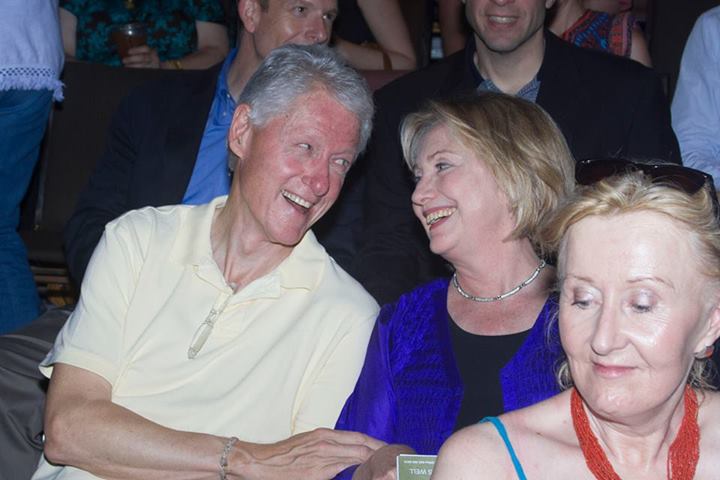The
Clinton Foundation was founded on the belief that we could help people
in the United States and around the world solve problems and seize
opportunities faster, better, and at lower cost. The Foundation works
with governments, businesses, NGOs, and private citizens on a wide
variety of health, economic, energy, and other activities that enable
people to live better lives.
Over the last 12 years, as a result of our programs:
- More
than 5 million people worldwide have access to low cost, high quality
AIDS treatment, including more than 500,000 children – that’s more than
75 percent of the total number of children on treatment. In South Africa
alone, CHAI-negotiated drug prices have saved more than $950 million
since 2010.
- More than 21,000 farmers in Malawi have received
lower-cost, higher-quality seed and fertilizer for their crops. As a
result, they have increased their production two and a half times, and
their incomes have increased more than 5 times. Soon we will be serving
100,000 farmers.
- More than 5,000 people have been trained in marketable job skills in Colombia.
- In
the fight against childhood obesity at home, the Alliance for a
Healthier Generation brokered agreements with soft-drink and juice
companies, resulting in a 90% reduction in calories from drinks served
in school cafeterias and vending machines. And because of our work in
18,000 schools in all 50 states to improve exercise and nutrition
programs, the Alliance was asked to play a leading role in the
implementation of First Lady Michelle Obama’s Let’s Move Active Schools
program.
- With the measures they have already undertaken or
committed to, cities in the C40 Cities Climate Leadership Group, which
works in partnership with the Clinton Climate Initiative, are on track
to reduce their collective annual emissions by 248 million tons by 2020.
- To
date, CGI members have made more than 2,300 commitments, which are
already improving the lives of more than 400 million people in over 180
countries. When fully funded and implemented, these commitments will be
valued at $73.5 billion. Because of the commitments made possible
through our unique model, more than 35 million people have gained access
to information technologies; nearly 40 million children have access to a
better education; more than 6 million people have increased access to
capital and finance; and nearly 59 million people have increased access
to maternal and child health survival programs. Over the years that CGI
has grown, our staff has increased their capacity to help people develop
commitments, find partners, and keep their commitments. At each meeting
we are spending more and more time giving updates on existing
commitments as well as announcing new ones. CGI America and CGI
University are doing well, and this year we will resume holding meetings
abroad with a CGI meeting in Brazil in December.
And this is just a sample of our work.
Our Financial Position
The
New York Times recently reported that the Foundation ran a deficit of $40 million in 2007 and 2008 and $8 million in 2012.
The
reporting requirements on our tax forms, called 990s, can be misleading
as to what is actually going on. Here’s why. When someone makes a
multi-year commitment to the Foundation, we have to report it all in the
year it was made. In 2005 and 2006 as a result of multi-year
commitments, the Foundation reported a surplus of $102,800,000 though we
collected nowhere near that. In later years, as the money came in to
cover our budgets, we were required to report the spending but not the
cash inflow. Also, if someone makes a commitment that he or she later
has to withdraw we are required to report that as a loss, though we
never had the money in the first place and didn’t need it to meet our
budget. In other words, for any foundation with a substantial number of
multi-year commitments, the 990s will often indicate that we have more
or less money than is actually in our accounts.
Like many
foundations, we were hit by the economic slowdown in 2007 and the crash
in 2008. Thankfully, we had the cash reserves to cover our largest
budgets, in our HIV/AIDS, malaria, and health training programs, and we
decided to do it because so many lives were at stake.
For 2012,
the reported deficit of $8 million is incorrect, and was based on
unaudited numbers included in our 2012 annual report. When the audited
financials are released, they will show a surplus.
Our Management and Organization
In
2011, after ten years of rapid growth, we decided we needed to review
our organization and management practices. As many companies and
organizations have done, we engaged an outside firm – Simpson Thacher –
to help us review both our governance approach and internal operating
practices.
Essentially, the review said we needed stronger
management staff full-time in New York, where most of our U.S.-based
staff are located, and a larger, more independent board. We currently
have 2,100 staff and volunteers in a total of 36 countries. The review
told us that my passion to keep overhead costs down – at about a low 8
percent for most of the last decade, rising only to above 11 percent in
2012 as we invested to support our growth – had gone on too long and
that the Foundation needed better coordination without dampening the
entrepreneurial spirit that infuses all our initiatives. In essence,
CHAI, CGI, the Alliance for a Healthier Generation, our Haiti project,
and other projects were still running too much like stand-alone
startups. They were very effective but not sustainable over the long
run.
Over the last two years, we have strengthened our
Foundation’s leadership and structure, including Bruce Lindsey’s
transition to chairman of the board and Eric Braverman coming on as CEO.
They have established a good working relationship and are proceeding
with the rest of our planned changes, including consolidating the
Foundation’s separate New York City offices in one location in midtown
to maximize collaboration and efficiency.
In so many ways, CHAI’s
growth and development have been amazing. It could not have happened
without Ira Magaziner’s hard work, dedication and innovative vision.
Starting with the agreements to lower the costs of high quality AIDS
drugs, tests, and lab equipment, CHAI has expanded its activities to
include lowering costs of malaria medicines, preventing mother-to-child
HIV transmission, providing more than one million HIV tests for infants,
and reducing the price of reversible contraceptives for women by 55%.
It has worked with several governments to train thousands of health care
workers. In Rwanda, CHAI has enlisted 19 American medical, nursing, and
health management schools to retrain the entire workforce at an
overhead cost of just 7%, by far the lowest ever charged by an American
NGO. On my recent trip to Africa, I announced a new CHAI initiative to
reduce malnutrition among young children. These efforts have attracted
strong support from the Gates Foundation and many others, as well as a
large number of foreign governments.
Like the rest of the
Foundation, CHAI’s significant growth required changes in its management
and financial structure. Because of its size and range of activities,
creating a separate governance structure made sense. CHAI has brought on
a new President and CFO as well as improved its reporting procedures to
ensure its growth – both programmatically and organizationally – are
keeping pace with its needs.
I continue to serve as chairman of
the CHAI board, with Ira Magaziner as vice-chair. CHAI also has two
advisory boards with distinguished membership: one to help with its
management in more than 30 countries, and one to evaluate and help
implement new initiatives.
I am immensely proud of what we’ve
accomplished in the last 12 years, and I want it to continue beyond the
time when I can raise the annual budget, and be as personally involved
in as many of the initiatives as I have been. Thanks to a large number
of committed supporters in the U.S. and around the world, including
individuals, large foundations like the Gates Foundation, the Dutch
Postcode Lottery and others, foreign governments, and our dedicated
staff, we’re in a good position. We are in the process of appointing a
larger, more independent board and we need an endowment, which our
family and friends are working to raise.
Our recent trip to Africa
renewed my conviction in the importance of our cooperative,
problem-solving approach and my energy for our work ahead. I want to
thank our supporters and invite other interested people to join us.
You can read the executive summary of Simpson Thacher’s review of the Clinton Foundation on our website at
www.clintonfoundation.org.



